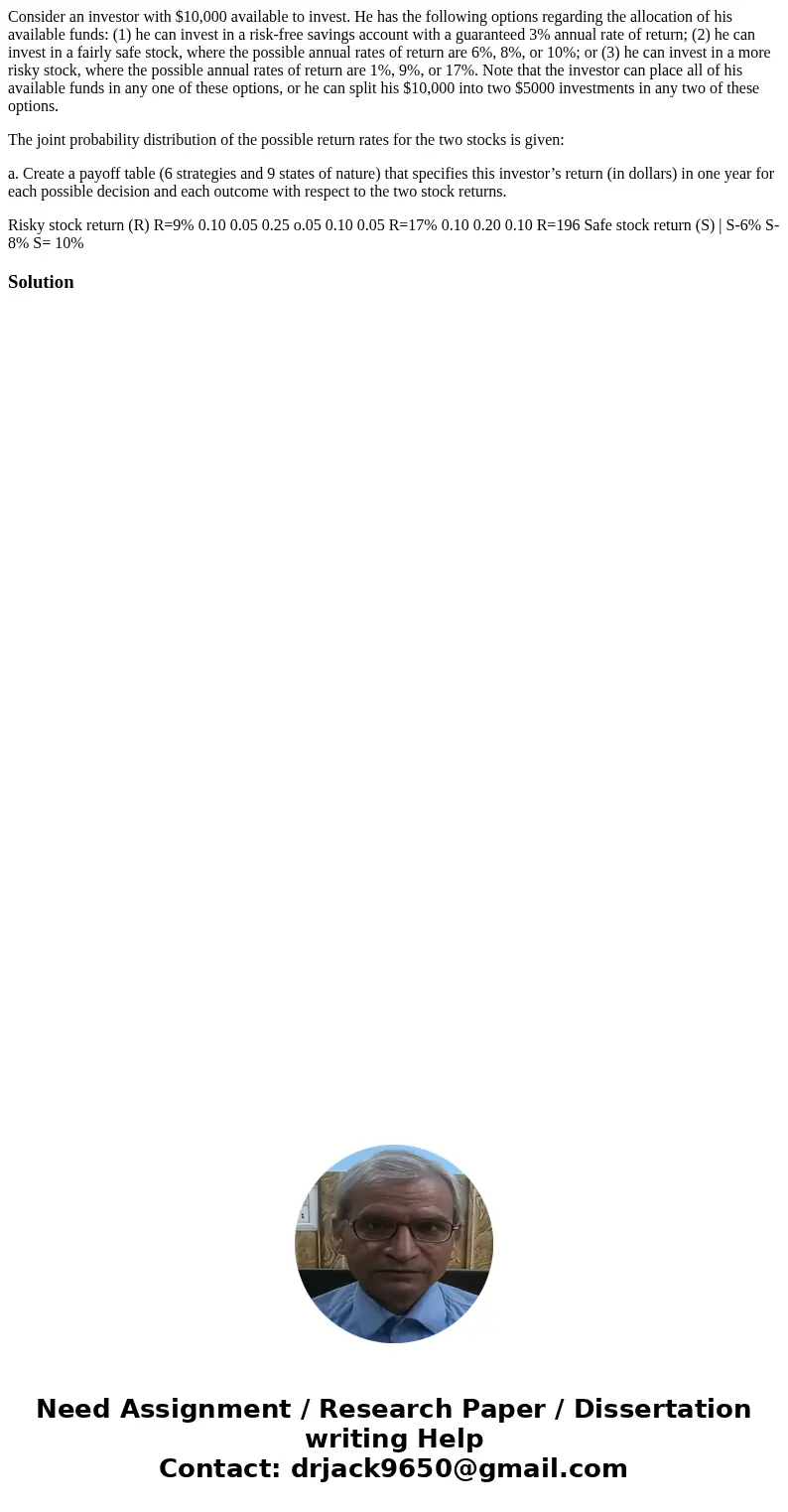Consider an investor with 10000 available to invest He has t
Consider an investor with $10,000 available to invest. He has the following options regarding the allocation of his available funds: (1) he can invest in a risk-free savings account with a guaranteed 3% annual rate of return; (2) he can invest in a fairly safe stock, where the possible annual rates of return are 6%, 8%, or 10%; or (3) he can invest in a more risky stock, where the possible annual rates of return are 1%, 9%, or 17%. Note that the investor can place all of his available funds in any one of these options, or he can split his $10,000 into two $5000 investments in any two of these options.
The joint probability distribution of the possible return rates for the two stocks is given:
a. Create a payoff table (6 strategies and 9 states of nature) that specifies this investor’s return (in dollars) in one year for each possible decision and each outcome with respect to the two stock returns.
Risky stock return (R) R=9% 0.10 0.05 0.25 o.05 0.10 0.05 R=17% 0.10 0.20 0.10 R=196 Safe stock return (S) | S-6% S-8% S= 10%Solution

 Homework Sourse
Homework Sourse